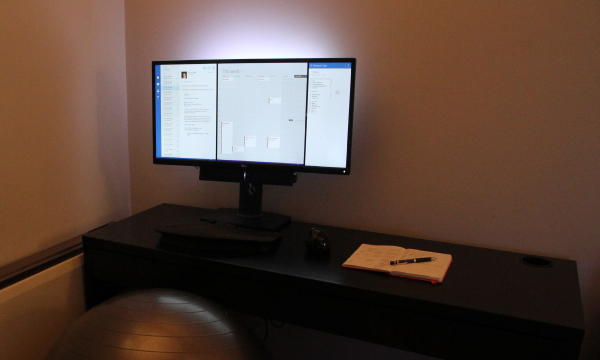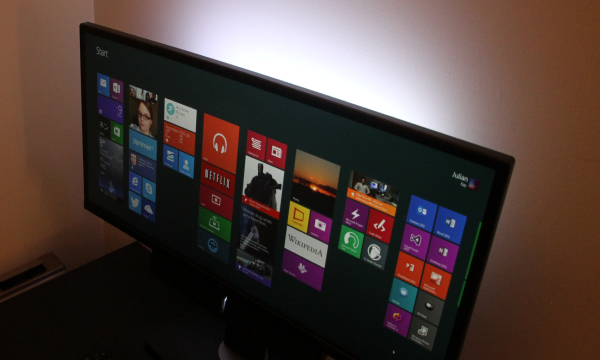
I recently set up a new development workstation for my Surface Pro 2 to plug into when I’m at home. The desk is a lot more comfortable to use for long periods when when compared to using my old MacBook on my lap. The biggest part of my desk setup is the 29 inch Ultrawide (21:9) Dell monitor, which is significantly larger than the 10.6 inch screen on the Surface Pro 2, and much nicer to use when writing software.
I have to say it has been really fantastic to have such a big, bright screen – but eye strain is a very real problem when working with computers for a long time. In my flat it’s especially problematic at night, and just about any time of the day in the darker winter months. Unsurprisingly, I’m more likely likely to be sitting in front of the computer at these times of the day, so something has to be done.
In the past I have used software solutions to try and reduce the potential for eye strain; I highly recommend that people try using F.lux to change the colour temperature of the display. Changing the colour of the screen to a warmer glow is certainly easier on the eyes, but it comes at a cost of changing the colour temperature of everything the screen is displaying. I don’t mind the colours being warmer in certain circumstances, so I use F.lux all the time on my work laptop.
I didn’t want to set it up on my Surface Pro 2, simply because the colour reproduction is really gorgeous on the tablet’s screen. So this time I thought I’d try a new approach to solving the eye strain problem.

I’ve attached LEDs to the back of the monitor to give the screen some back lighting. There are two strips of white LEDs which are powered by the two USB ports on the underside of the monitor. I tried a few different arrangements of the strips, and I found that having the strips quite high up ended up with the best result, while the distribution is obviously greater at the top – it looks absolutely fine when you’re sat in front of the screen.
The white LED back lighting is certainly on the blue-end of the spectrum when compared to the warm ambient light of the room, but it matches the cooler glow of my Ultrawide Dell monitor really well. Coincidentally, the power LEDs on the monitor and sound bar also match the white back lighting. It’s a small detail, but it certainly helps the overall look of the setup.
Less than a month in, and I’m already thinking that this will factor into my plans for all my future workstations. I feel like having good lighting around the computer really helps with concentration and reducing eye strain.